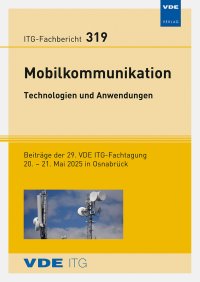Advancing Telerobotics: Evaluating ROS 2 in a Real-World Communication Test Environment
Konferenz: Mobilkommunikation - 29. ITG-Fachtagung
20.05.2025-21.05.2025 in Osnabrück
Tagungsband: ITG-Fb. 319: Mobilkommunikation – Technologien und Anwendungen
Seiten: 6Sprache: EnglischTyp: PDF
Autoren:
Petershans, Jan; Herbst, Jan; Mittag, Eric; Rueb, Matthias; Schotten, Hans D.
Inhalt:
Wireless robotic teleoperation is an essential area of research with applications in remote industrial control, medical robotics and other domains requiring low latency communication and real-time system responsiveness. This work presents an updated version of a leader-follower based teleoperation setup utilizing two collaborative robots (cobots) and the Robot Operating System (ROS) 2 framework to evaluate wireless communication performance under real world work conditions. The follower robot mirrors the leaders hand-guided motion and provides direct force feedback, with optional motion scaling via Inverse Kinematics (IK) for tasks requiring higher precision. Through the use of ROS 2 being able to use the full update rate of 1000 Hz per cobot, the system enables detailed analysis of communication latency and real-time behavior. A comparative study between the former ROS 1 (Noetic)-based and a new introduced ROS 2 (Humble) based implementation is conducted, focusing on message timing, latency, jitter, and the computational impact of IK on the system performance. Results show that the Data Distribution Service (DDS)-based architecture of ROS 2 offers superior realtime performance, scalability, and flexibility, making it more suitable for evaluating next-generation wireless technologies. Thus, the test environment provides a robust platform for benchmarking communication systems for future industrial and medical applications without prior hard- and software limitations due to ROS and performance issues.


